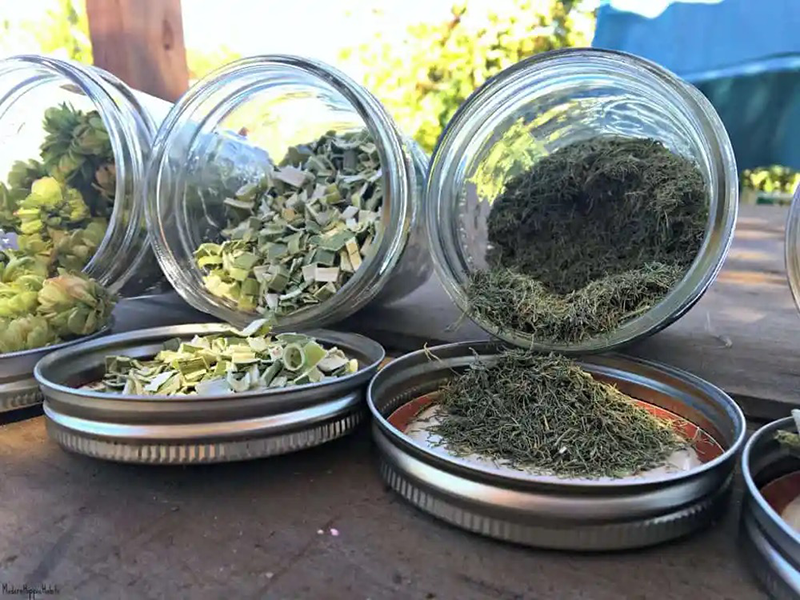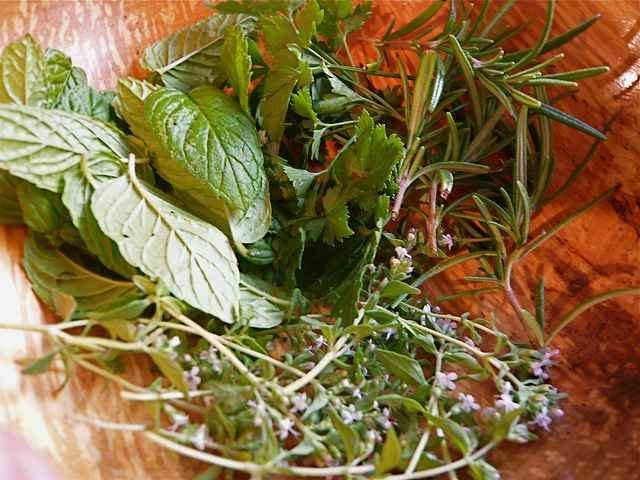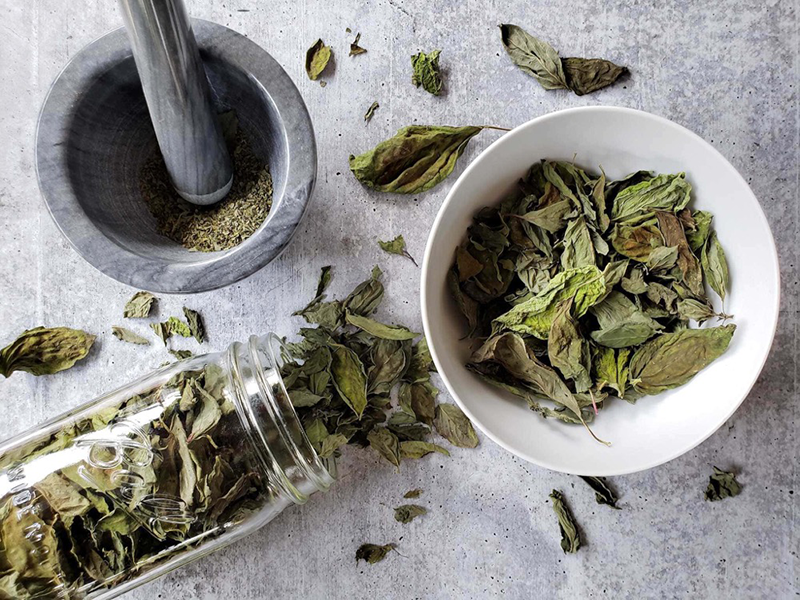
Content Menu
● Understanding the Dehydration Process
● Recommended Drying Times for Common Herbs
● Step-by-Step Guide to Dehydrate Herbs
● Tips for Successful Herb Dehydration
● How to Store Dried Herbs
● Additional Techniques for Dehydrating Herbs
>> Air Drying
>> Oven Drying
>> Microwave Drying
● Factors Affecting Drying Time
● Common Mistakes When Dehydrating Herbs
● Conclusion
● FAQ
>> 1. How do I know when my herbs are fully dehydrated?
>> 2. Can I dehydrate different types of herbs together?
>> 3. What is the best temperature for dehydrating herbs?
>> 4. How long can I store dried herbs?
>> 5. Is it better to store whole dried herbs or crushed ones?
● Citations:
Dehydrating herbs is a fantastic way to preserve their flavor and nutritional value for long-term use. A food dehydrator is an essential tool for this process, allowing for precise temperature control and efficient drying. In this comprehensive guide, we will explore how long it takes to dehydrate various herbs, the best practices for using a food dehydrator, and tips for storing your dried herbs.

Understanding the Dehydration Process
Dehydration involves removing moisture from food, which inhibits the growth of bacteria, yeast, and mold. For herbs, this process not only extends their shelf life but also concentrates their flavors. The time required to dehydrate herbs can vary based on several factors:
- Type of Herb: Different herbs have varying moisture contents.
- Humidity Levels: High humidity can increase drying times.
- Dehydrator Temperature: Lower temperatures generally preserve more flavor and nutrients.
Recommended Drying Times for Common Herbs
Here's a quick reference table outlining the approximate drying times for various herbs at optimal temperatures (generally between 95°F to 125°F):
| Herb | Drying Time (Hours) |
| Basil | 4 - 6 |
| Oregano | 4 - 6 |
| Thyme | 4 - 6 |
| Mint | 5 - 7 |
| Rosemary | 5 - 7 |
| Sage | 5 - 7 |
| Parsley | 4 - 6 |
| Cilantro | 4 - 6 |
Step-by-Step Guide to Dehydrate Herbs
1. Preparation:
- Select Fresh Herbs: Choose healthy, fresh herbs. Avoid any that are wilted or damaged.
- Wash and Dry: Rinse the herbs under cool water to remove dirt and pesticides. Use a salad spinner or paper towels to remove excess moisture.
2. Preheat the Dehydrator:
- Set your dehydrator to a temperature between 95°F and 125°F, depending on the type of herb and your specific dehydrator model.
3. Arrange the Herbs:
- Place the herbs on the dehydrator trays in a single layer. For small leaves, you may leave them on their stems; for larger leaves, remove them to facilitate quicker drying.
4. Dehydrate:
- Check the herbs periodically. Most herbs will take between 1 to 4 hours to dry completely, depending on their moisture content and thickness.
5. Check for Doneness:
- The herbs are ready when they crumble easily between your fingers or when the stems snap rather than bend.
6. Cooling and Storing:
- Allow the dried herbs to cool completely before storing them in airtight containers. This prevents condensation from forming inside the container.

Tips for Successful Herb Dehydration
- Avoid Overcrowding: Ensure there is space between the leaves on each tray for air circulation.
- Rotate Trays: If using a stacked dehydrator, rotate trays occasionally to promote even drying.
- Labeling: Label containers with the herb name and date of dehydration for easy identification later.
How to Store Dried Herbs
Proper storage is crucial for maintaining the flavor and potency of your dried herbs:
- Use airtight containers such as glass jars or vacuum-sealed bags.
- Store in a cool, dark place away from direct sunlight and heat sources.
- Whole dried herbs retain flavor longer than crushed ones; crush just before use.
Additional Techniques for Dehydrating Herbs
While using a food dehydrator is one of the most efficient methods for drying herbs, there are other techniques worth mentioning:
Air Drying
Air drying is a traditional method that requires no special equipment. Simply tie small bunches of herbs together and hang them upside down in a warm, dry area with good air circulation. This method can take several days but is effective for hardy herbs like rosemary and thyme.
Oven Drying
If you're short on time, you can use your oven to dry herbs quickly. Set your oven to its lowest temperature (usually around 170°F) and spread the herbs on a baking sheet lined with parchment paper. Keep the oven door slightly ajar to allow moisture to escape, checking frequently until they are dry (usually about an hour).
Microwave Drying
For quick results, you can also use a microwave. Place fresh herb leaves between two paper towels and microwave on high in short bursts (10-20 seconds), checking frequently until they are dry.
Factors Affecting Drying Time
Several factors can influence how long it takes to dehydrate herbs:
- Moisture Content: Freshly harvested herbs contain varying amounts of moisture; those with higher moisture content will take longer to dry.
- Thickness of Leaves: Thicker leaves may require additional time compared to thinner ones.
- Environmental Conditions: Humidity levels in your kitchen or pantry can affect drying times; higher humidity may slow down the process.
Common Mistakes When Dehydrating Herbs
To ensure successful dehydration, avoid these common pitfalls:
- Not Washing Herbs: Always wash your herbs before drying them to remove dirt and pesticides.
- Overloading Trays: Avoid placing too many herbs on one tray; this can trap moisture and lead to uneven drying.
- Ignoring Temperature Settings: Always adhere to recommended temperature settings; too high can cause loss of flavor and nutrients.
Conclusion
Dehydrating herbs is an effective method to preserve their freshness and flavor while extending their shelf life significantly. By following proper techniques and guidelines, you can enjoy homegrown or store-bought herbs year-round in your cooking. Whether you choose a dehydrator, air drying, or oven methods, each technique has its benefits that cater to different preferences and circumstances.

FAQ
1. How do I know when my herbs are fully dehydrated?
When the leaves crumble easily between your fingers and the stems snap without bending, your herbs are fully dehydrated.
2. Can I dehydrate different types of herbs together?
Yes, you can dehydrate different types of herbs together; however, keep track of which ones are in each tray as they may have different drying times.
3. What is the best temperature for dehydrating herbs?
The best temperature range for dehydrating most herbs is between 95°F and 125°F (35°C to 52°C). Lower temperatures help preserve flavor and nutrients.
4. How long can I store dried herbs?
When stored properly in airtight containers in a cool, dark place, dried herbs can last from six months up to a year without significant loss of flavor.
5. Is it better to store whole dried herbs or crushed ones?
It is generally better to store whole dried herbs as they retain their flavor longer than crushed ones. Crush them just before use for maximum freshness.
Citations:
[1] https://www.backpackingchef.com/dehydrating-food.html
[2] https://www.cnet.com/pictures/tips-for-using-your-new-dehydrator/
[3] https://herbsathome.co/how-to-dry-herbs/
[4] https://www.freshoffthegrid.com/dehydrating-food/
[5] https://learn.eartheasy.com/guides/a-beginners-guide-to-dehydrating-food/
[6] https://www.learningherbs.com/blog/how-to-dry-herbs
[7] https://homesteadingfamily.com/preservation-101-intro-to-dehydrating-food/
[8] https://www.allrecipes.com/article/how-to-use-a-food-dehydrator/
[9] https://extension.oregonstate.edu/sites/default/files/documents/8836/sp50921dryingherbs.pdf
[10] https://westonbrands.com/weston-dehyrating-tips











